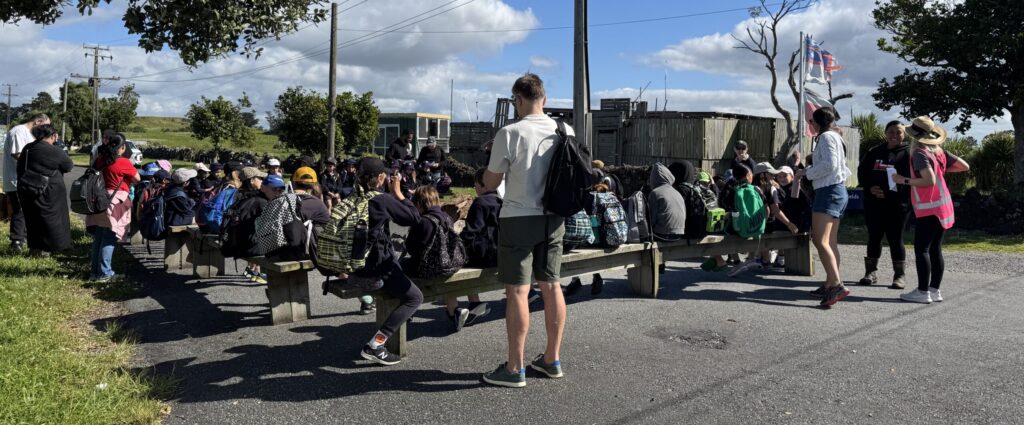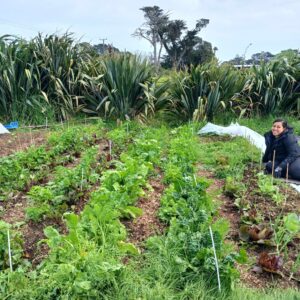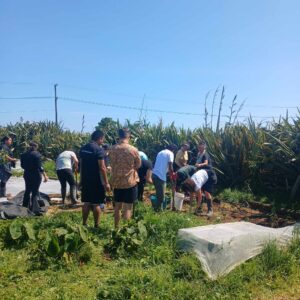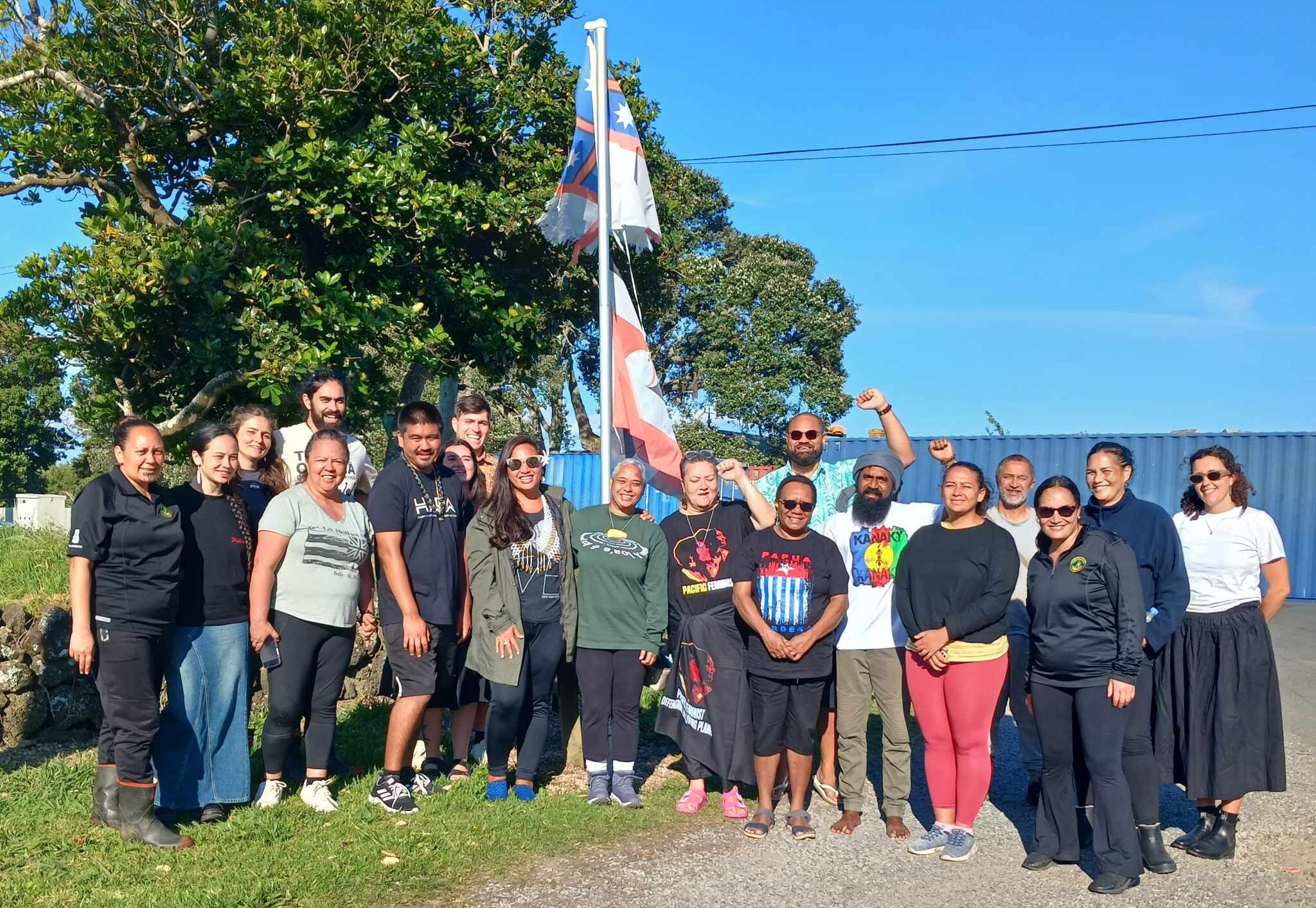A collaboration in Tāmaki included a series of impactful kaupapa aimed at strengthening kaitiakitanga, fostering intergenerational knowledge transfer, and building resilience within our communities. The indigenous rōpū cross-cultural connection focused on environmental justice and protection. Te Aho Tū Roa Poutautoko Pania Newtown shares their story.
This year, we were privileged to collaborate with Te Ihu o Mataoho Tours and Te Ahiwaru Climate Resilience teams on a series of impactful kaupapa aimed at strengthening kaitiakitanga, fostering intergenerational knowledge transfer, and building resilience within our communities. These initiatives combined Mātauranga Māori with hands-on, place-based learning experiences that connected participants of all ages with te taiao.

Waterlea Primary waiting at the ahi preparing to go on hīkoi to learn about ngā maara o nehe in Ootuataua.
Scale and impact
Across these collective efforts, the following key achievements were recorded:
- Over 900 pakeke, rangatahi, and tamariki actively engaged in various activities, reinforcing a strong intergenerational approach.
- More than 600 native trees were planted, contributing to habitat restoration, carbon sequestration, and the revitalization of puna wai.
- Intergenerational knowledge transfer took place, ensuring that cultural practices, environmental awareness, and kaitiakitanga responsibilities were shared between elders, parents, and younger generations.
- Mātauranga Māori was at the forefront of all engagements, allowing participants to deepen their understanding of traditional ecological knowledge, maramataka, and sustainable land management.
- Connections to the taiao and to one another were fostered, strengthening relationships between individuals, whānau, and community groups while encouraging long-term commitment to climate resilience and kaitiakitanga.

Elle preparing the maara for a workshop with Mangere College tauira.
Learning and Development Outcomes

Te Kuaka, pacific indigenous network, planting taro in the whenua.
- Place-based experiential learning: Participants had the opportunity to work directly on whenua Māori, learning about local ecosystems, land restoration, and the cultural significance of their surroundings.
- Practical kaitiakitanga skills: Activities such as tree planting, maara kai, and puna wai restoration equipped participants with hands-on knowledge that could be applied in their own communities.
- Rangatahi leadership development: Taitamariki participants took active roles in planning and executing projects, gaining leadership experience and reinforcing their sense of responsibility through kaitiakitanga.
- Climate resilience education: Engagements with the Te Ahiwaru Climate Resilience Team provided rōpu with critical knowledge on the impacts of climate change, adaptation strategies, and how traditional Māori knowledge can be applied to contemporary environmental challenges.
A Holistic Approach to Community Engagement
Our approach was deeply holistic and tikanga-driven, emphasising the interconnectedness of ira tangata, whenua, and te taiao. The various kaupapa integrated:
- Whanaungatanga – Building strong, enduring connections between different generations, whānau, and wider community networks.
- Manaakitanga – Encouraging participants to care for one another and the whenua while recognising the reciprocal relationship between people and the environment.
- Tino rangatiratanga – Supporting the hapori of the collaborating groups in reclaiming their autonomy over their land and environmental decision-making.
- Sustainability and regeneration – Not just focusing on immediate impacts but ensuring long-term environmental and cultural sustainability.
The success of these collaborations highlights the power of community-led environmental initiatives grounded in Mātauranga Māori. By embedding tikanga into every aspect of the work, we continue to strengthen kaitiakitanga, empower our people, and safeguard our taiao for generations to come.

Indigenous rōpu cross cultural connection focused on environmental justice and protection.





